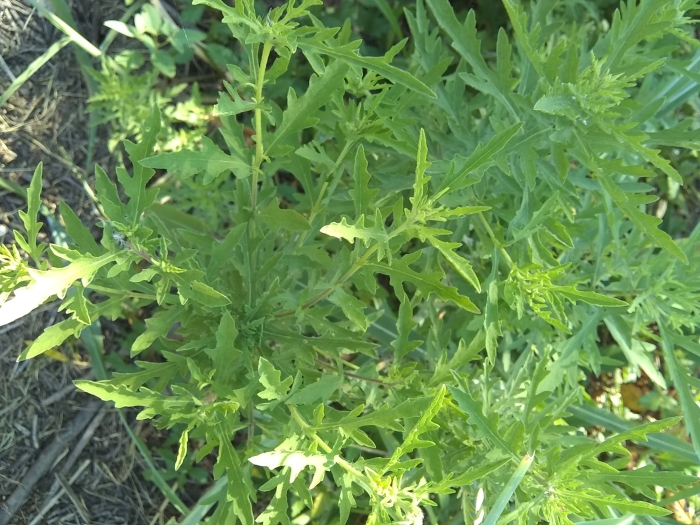Cuman Ragweed
(Ambrosia psilostachya)
Cuman Ragweed (Ambrosia psilostachya)
/
/

Clay
CC BY 4.0


















































Estimated Native Range
Summary
Cuman Ragweed is known for its ability to thrive in disturbed areas and is often found in overgrazed pastures and along roadsides. It is not commonly cultivated due to its allergenic pollen, which can cause significant discomfort for people with allergies. In terms of cultivation, it prefers full sun to part shade and can tolerate a range of soil types, provided they have good drainage. While it is drought-tolerant once established, it benefits from occasional watering during prolonged dry spells. This species is not typically used in ornamental gardening due to its association with hay fever and its generally weedy appearance. However, it can be used in restoration projects and naturalized areas where its hardiness and ability to stabilize soil are beneficial.CC BY-SA 4.0
Plant Description
- Plant Type: Herb
- Height: 1-3 feet
- Width: 0.3-0.7 feet
- Growth Rate: Moderate
- Flower Color: N/A
- Flowering Season: Fall, Summer
- Leaf Retention: Semi-Deciduous
Growth Requirements
- Sun: Full Sun
- Water: Medium, Low
- Drainage: Fast, Medium, Slow
Common Uses
Bee Garden, Bird Garden, Butterfly Garden, Drought Tolerant, Low Maintenance
Natural Habitat
native to a variety of habitats including prairies, plains, and riverbanks across North America
Other Names
Common Names: Coastal Ragweed, Western Ragweed, Perennial Ragweed, Western Ragweed, Dunbible-Weed, Roman Wormwood, Naked-Spine Ambrosia, Krybende Ambrosie, Stauden-Ambrosie, Ambrosie Vivace
Scientific Names: , Ambrosia psilostachya, Ambrosia peruviana, Ambrosia psilostachya var. coronopifolia, Ambrosia psilostachya var. lindheimeriana, Ambrosia psilostachya subsp. californica, Ambrosia psilostachya var. psilostachya, Ambrosia californica, Ambrosia rugelii, Ambrosia psilostachya var. californica
GBIF Accepted Name: Ambrosia psilostachya DC.